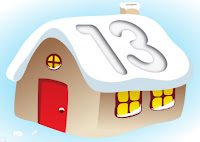Prepare your sandboxes, Winter 13' is coming!! | Salesforce.com Winter 13' Best Features | Part 1
All the users of Salesforce.com & Force.com are always access the latest Salesforce.com/Force.com version because Salesforce.com has comprehensive real time upgrade mechanism. It doesn't break our customizations and integrations. This real time upgrade mechanism allow us to feel the rapid and latest innovation.
After the summer, It's time to welcome Salesforce.com Winter 13' release. Salesforce.com Winter '13 Release Note has been released. Winter 13' has lots of interesting and innovative new features. I'm listing some of main features here.
- Visualforce Charting - Generally available
Visualforce Charting had release as a pilot feature in Winter 12’ release. Before, we had to use Google charts or Jquery or any other third party javascript libraries for create charts in a visualforce page. Now we don’t have to depend on them. Salesforce.com has provided Visualforce charting as collection of components that provide a simple and intuitive way to crate charts in our visualforce pages and custom components. This is an easy way to create business charts using data sets which directly queried via SOQL or by building the data set in your own Apex code. Charts are defined using Visualforce components, which generate JavaScript that renders the chart within the browser. The visualforce chart types which released in pilot version (bar, line, and pie) are joined by new four chart types : area, gauge, radar, and scatter.
Area - <apex:areaSeries>
Gauge - <apex:gaugeSeries>
Radar - <apex:radarSeries>
Scatter - <apex:scatterSeries>
Gauge - <apex:gaugeSeries>
Radar - <apex:radarSeries>
Scatter - <apex:scatterSeries>
- Global Permission Sets
Permission sets have been released for generally available in Winter 12’. A permission set is a collection of settings and permissions that give users access to various tools and functions. The settings and permissions in permission sets are also found in profiles, but permission sets extend users' functional access without changing their profiles.
Previously, a permission set was associated with specific user license. If you want to assign one permission set to users with different user license, you have to create several permission sets for each type of user license. After Winter 13’ we will not suffer from that issue because Winter 13’ is going to release global permission sets which aren’t associates with a specific user license.
- Force.com Canvas Framework—Pilot
Salesforce.com already has integration feature between Force.com apps and existing external system. But there can be have redesigning and reintegrating your external applications. What if, you have a set of tools to integrate your external application in Salesforce without redesigning and reintegrating? Here it is. Force.com Canvas Framework enables you to easily integrate a third-party application in Salesforce. Canvas Framework is a set of tools and JavaScript APIs that you can use to expose an application as a canvas app. This is a one of best feature because you can take your new or existing applications and make them available to your users as part of their Salesforce experience. The third-party app that you want to expose as a canvas app can be written in any language. The only requirement is that the app has a secure URL (HTTPS).
Canvas Framework includes tools that handle:
- Authentication—If your application requires authorization, you can implement it by using a signed request or OAuth 2.0.
- Cross-Domain XHR—JavaScript support for cross-domain XML HTTP requests back to the Salesforce domain.
- Context—API support that enables you to retrieve context information about the environment in which the canvas app is running.

yurtdışı kargo
ReplyDeleteresimli magnet
instagram takipçi satın al
yurtdışı kargo
sms onay
dijital kartvizit
dijital kartvizit
https://nobetci-eczane.org/
PCKZ
salt likit
ReplyDeletesalt likit
dr mood likit
big boss likit
dl likit
dark likit
LCA3F2
شركة تسليك مجاري بالدمام SyxM6Z0pb3
ReplyDeleteشركة تسليك مجاري في عجمان ZSLwZNzYpK
ReplyDeleteشركة تنظيف سجاد بخميس مشيط CRgsNPuIpC
ReplyDelete